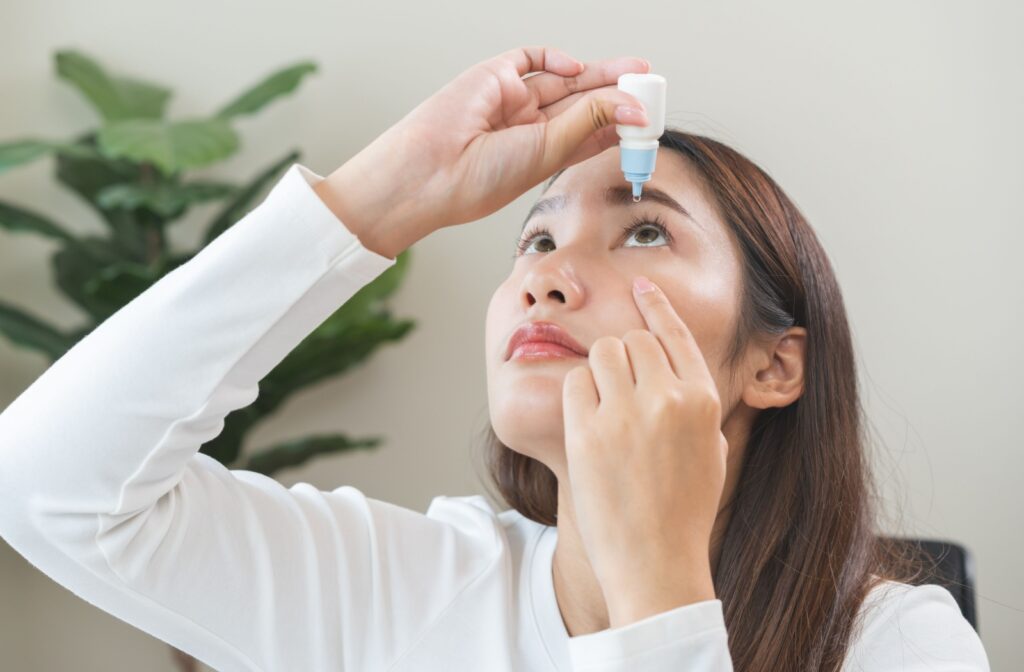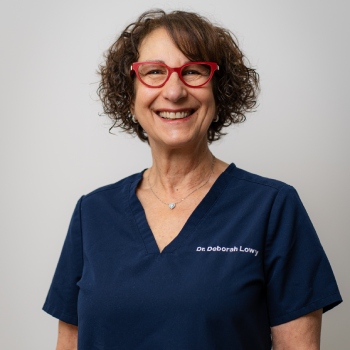Are you struggling with dry, irritated eyes or blurry vision? Your meibomian glands, located in the eyelids, may be contributing to the discomfort. These glands produce oils that help maintain a stable tear film and keep the eyes moist. Symptoms such as dryness, itching, inflammation, and vision changes can develop when they become clogged.
Meibomian gland dysfunction (MGD) is a common condition, but there are ways to manage it effectively. Understanding the role of these glands, the causes of blockages, and available treatment options, such as eating more fatty acids or warm compresses and eyelid massages, which can help improve eye comfort and support long-term eye health.
What Are Meibomian Glands?
Meibomian glands are tiny oil-producing glands located along the edges of your eyelids, near the base of your eyelashes. Their primary job is to release an oil called meibum that prevents your tears from evaporating too quickly, ensuring your eyes stay lubricated and comfortable.
When these glands become clogged, the meibum no longer flows as it should, leaving your eyes prone to dryness, irritation, and inflammation. This condition, called meibomian gland dysfunction (MGD), is one of the leading causes of chronic dry eye.
Common Causes of the Meibomian Gland Clogging
Several factors contribute to a meibomian gland blockage, including aging, environment, medical conditions, and certain medications.
- Aging: Over time, the oils produced by these glands naturally thicken, making it difficult for them to flow freely and increasing the risk of blockages.
- Environmental factors: Dry air, wind, and air conditioning all hasten tear evaporation. Excessive screen time or working in low humidity environments can aggravate symptoms.
- Medical conditions: Inflammatory conditions like blepharitis, rosacea, and autoimmune disorders such as Sjögren’s syndrome often make the glands more prone to dysfunction.
- Medications: Medications such as antihistamines, birth control pills, and decongestants can reduce oil production, leading to dryness and gland blockages.
How to Unclog Meibomian Glands
If your meibomian glands are blocked, there are both at-home and in-office treatments that can help.
Warm Compresses
Applying a warm compress to your closed eyelids can help loosen thickened oil and encourage it to flow again. Using a specially designed eye mask, hold it gently against your eyelids for 10 minutes daily for relief.
Gentle Lid Massage
After using a warm compress, gently massage your eyelids to express the oils from the glands. Use clean fingers or a cotton swab to apply gentle pressure, moving in circular motions from the inner corners outward.
Eyelid Hygiene
Keeping your eyelid margins clean is essential in managing MGD. Using specially designed eye lid wipes or foam to clean your lids. Regularly cleaning this area helps reduce debris and inflammation that can clog the glands.
Omega-3 Fatty Acids
Adding omega-3 fatty acids to your diet—through foods like fish and flaxseed or supplements—has been associated with healthier tear production and gland function.
Artificial Tears & Ointment
For immediate relief, use preservative-free artificial tears or lubricating ointments. These can reduce dryness and irritation, especially during long, dry days or while sleeping.

Professional Treatments
For persistent symptoms or severe MGD, professional interventions may be necessary. At Lowy & Sewell Eye Care, we offer advanced procedures that provide more effective relief than at-home treatments. Here are a few options:
Lipiflow
LipiFlow is a treatment system designed to gently warm and massage the meibomian glands in the eyelids, helping to clear blockages and restore their natural function. The controlled heat softens clogged oil (meibum), while gentle pressure encourages its release, allowing the glands to produce a more stable tear film. This process helps retain moisture on the eye’s surface and ensures even tear distribution, reducing dryness and irritation.
The LipiFlow treatment typically lasts about 12 minutes, with results that can improve symptoms for up to 12 to 24 months. Some patients may require additional sessions to maintain long-term relief and optimize meibomian gland function.
OptiLIGHT
OptiLIGHT by Lumenis is a noninvasive, light-based treatment designed to manage dry eye by targeting the area below the eyes. It is the first and only FDA-approved intense pulsed light (IPL) treatment for dry eye management, backed by over 20 clinical studies.
This gentle and safe procedure uses precise light pulses to reduce inflammation commonly associated with dry eye disease, improve tear break-up time, and enhance meibomian gland function. By addressing the underlying causes of dry eye, OptiLIGHT helps promote better tear stability and long-term eye comfort.
When to Consult Lowy & Sewell Eye Care
While at-home remedies can relieve persistent dry eye symptoms, professional evaluation may be required. Our experienced optometrists can help develop a personalized treatment plan specific to your needs. Meibomian gland dysfunction isn’t just a source of discomfort—it can affect your overall eye health. At Lowy & Sewell Eye Care, we combine patient-first care with the latest technologies to help you see and feel your best. Make sure to book your appointment today!



